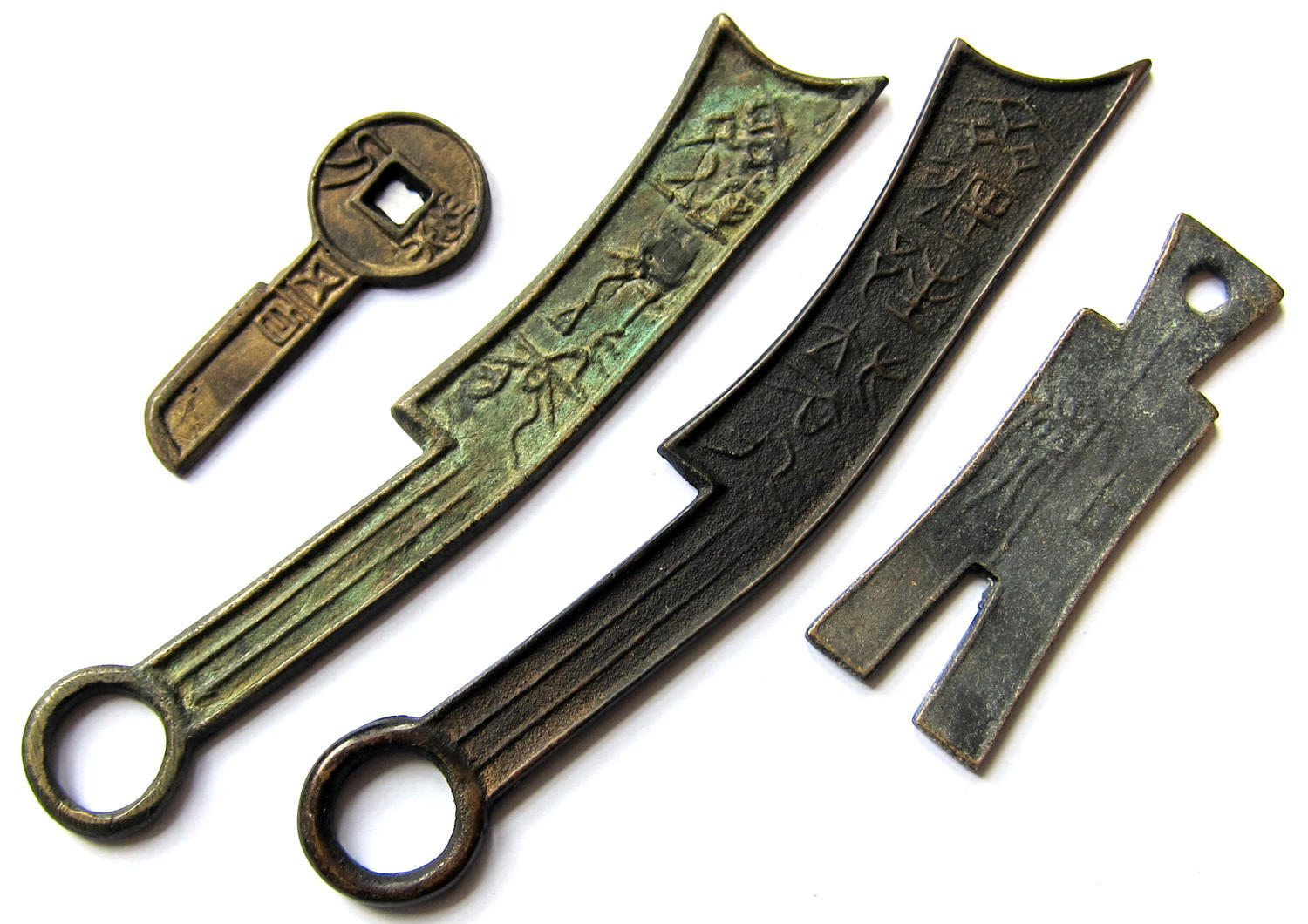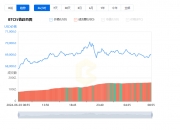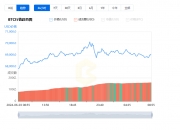当代区块链的概念出现刚刚超过10年,但类似尝试却在悠久的过去就有了案例。何况从一开始起,这类机制就与货币经济息息相关。或许你会觉得贝壳原始落伍,但它作为货币的历史却在很多地区盛行到19世纪。哪怕是在互联网移动支付流行的今日,依然有国家将其作为认可的法定货币。
The concept of the strong's contemporary block chain has only emerged for more than 10 years, but similar attempts have been documented in the long past. And since the beginning, such mechanisms have been linked to the monetary economy. Perhaps you will find the shell to be primitive, but its history as a currency has prevailed in many parts of the world until the nineteenth century. Even today, when mobile payments are popular on the Internet, there are countries that use it as an accepted legal currency.
原始的分布式记账
original distributed billing
贝壳是已知最早的货币
贝壳作为货币的历史,已经模糊而不可考。但在人类社会进入金属钱币之前,贝壳就已满布五大洲的各个人群。在洲际流动并不方便的年代,贝壳就具有如此强大的支付影响力,可见其在原始人类心中存在极大的价值和存在感。 But before human society enters metal coins, the shell is full of people from five continents. In times of inexplicable intercontinental movement, the shell has such a powerful pay-as-you-go influence that it has great value and a sense of existence in the original human mind. 由于早期人类没有轮子和马匹等交通技术,所以行船就成为移动和运输的最佳选择。加之江河湖海的水产较为丰富,也容易吸引大量的人口前来捕捞。其中,贝类又因为没有什么逃跑能力,更容易沦为唾手可得的充饥口粮。相应的,以贝壳为原料的早期艺术品也流行起来。最初的项链、手环、耳环或吊坠,大都以贝壳作为原料,并逐渐拥有了交换价值。 Since early humans have no transport technology such as wheels and horses, ships are the best choice for movement and transport. And the river and lake seas are rich in water and easily attract large numbers of people to fish. Among them, shellfish are more likely to become a ready-made food for hunger because they have no escape capacity. The early works of art based on shells are popular. The initial necklaces, bracelets, earrings, or hangs, are used as raw materials, and are increasingly of value in exchange. 新石器时代的经济发展 催生了交易介质需求 Economic development in the New Stone Age has created demand for trade media 随着人类社群的数量增涨,早期农业和牧业的发展都催生出大量剩余产品。因此,不同地域内的交换行为就开始出现。但大部分农牧产出都只有很短的保质期,也不方便交换者大量携带,迫使人类必然寻求一种相对稳定而丰富的交易介质。已经有稳定产量的贝壳就顺势而为,成了人类历史上的首种货币。 With the increase in the number of human communities, early agricultural and pastoral developments have led to a large number of surplus products. As a result, trade-offs have begun to occur in different geographical areas. But most agricultural output has a short shelf life and is not easily carried by traders, forcing humanity to seek a relatively stable and rich trading medium. 超出很多人的固有认知,贝壳货币从一开始就具备后来的分布式记账特点。虽然很多人会以今天的国家货币做个对比,但贝壳交易实际上并没有明确的中心化理念。每个沿海或河畔部落,都可以到水边“挖矿”,然后自行加工为相对整齐的形式。唯一的行业标准,就是需要以贝类的壳为介质,而不是其他生物的残骸。纵然有美洲内陆居民突发奇想,创造出形式类似的蜗牛壳币,但也不能继续逾越出这个范畴。 goes beyond many people's intuitive knowledge, and shell money has since its inception a later distributional accounting feature. , although many will compare today's national currency, shell trading does not actually have a clear concept of centralization. Each coastal or riverside tribe can go to the waterside and then process itself in a relatively neat form. The only industry criterion is the need for shell shells as mediums, not as remains of other organisms. 在河边寻觅贝壳 就是一种原始“挖矿” "Strong" searching for shells by the river is a kind of original "mining" 至于非常要紧的具体价值,则完全取决于交易双方的协商结果。也就是说,不仅贝壳的购买力会随着物资多寡而起伏,本身的价格也在流通过程中有诸多变数。一个生活在内陆的居民,可能出于投机而换得大量贝壳,转眼就发现其价格因各种不可抗因素而下跌。 depends entirely on the outcome of the negotiations between the parties to the transaction. means that not only does the purchasing power of the shell fluctuate with the amount of material, but the price itself varies in the course of the flow. A resident living in the interior may exchange a lot of shells for speculation. 这主要是因为贝壳作为货币,缺乏近现代金融产品所必需的准备金制度。贝类生物的产量,完全可能因自然因素而忽高忽低。人们也拿不出具有稳定价值的可靠产品,作为己方贝壳币的背书。因此,贝壳就属于典型的野蛮生长阶段,与后世的早期区块链有诸多类同之处。 This is mainly due to the lack of shell as a currency, and the lack of a system of reserves needed for near modern financial products. The production of shellfish is likely to be expected to be high and low due to natural factors. No reliable products of stable value can be produced as endorsements of their own shell money. 贝壳作为货币的价值 上下浮动非常剧烈 The value of the shell as a currency is very strong up and down 面临贵金属挑战 faces the metal challenge 克里特岛的米诺斯早期铜币 > early Minos coins from Crete 一旦人类社会进入铜器时代,贝壳货币的局限性就暴露无遗。大宗商品交易的诞生,更让商人和管理者都对无背书的贝壳忍无可忍。于是,最初的贵金属货币便孕育而生。起初,作为重要战略资源的铜矿,就是价值极高的支付手段。考古学家在克里特岛,就发现有米诺斯文明铸造的原始铜币。其原料则来自盛产铜矿的塞浦路斯,显得非常具有国际化水准。 As soon as human society enters the copper age, the limits of shell money are exposed. The birth of the bulk merchandise trade, which makes merchants and managers more vulnerable to unendorsed shells. So the initial precious metal money was born. Initially, copper, as an important strategic resource, was a very valuable means of payment. Archaeologists found original copper coins made by Minos civilization on the island of Crete. 当然,贵金属的引入,从不意味着贝壳作为货币的历史结束。人们在大范围的跨区域贸易时,自然是首选高净值的金银铜铁,提升购买力与运输便捷。但在特定社区内部,贝壳仍旧是约定俗成的日常支付手段。尤其是在非沿海地带,贝壳的价值反而随着滨海挖矿者的减少而反向提升。所以,直到马匹育种技术发展起来,贝壳币的流通领域才进一步受到压缩。由于从一开始就具有区块链属性,贝壳币完全有能力在原产地的辐射范围内保持意义。因为只要有使用人群的首肯,哪怕是游戏币也可以具有完备的金钱能力。 Of course, the introduction of precious metals does not mean the end of the history of shellfish as a currency. When people trade on a wide scale across regions, it is natural to choose high-net silver and silver iron, increasing purchasing power and transportation. But, within a particular community, shells are still a customary means of daily payment. , especially in the non-coastal zone, the value of shells rises reverses with the reduction in the number of miners in the sea. So, until horse breeding technology develops, the circulation of seashells is further compressed. 公元前15-9世纪的商周贝壳货币 不过,随着交通技术发展与国际贸易的距离拉长,贝壳币还是逐步在多个区域被淘汰出去。首先是在商品经济最发达的东地中海地区,然后是与之密切联系的叙利亚、两河流域和埃及。大量金银的开采和流通,更是让铜钱的价值迅速下跌,并在日常生活中挤压掉贝壳的最后阵地。 However, as the distance between transport technology and international trade increases, shellfish is gradually phased out in several regions. is first in the eastern Mediterranean region, where the commodity economy is most advanced, and then in Syria, the two river basins, and Egypt, with which it is closely linked. 公元前7-6世纪,小亚细亚半岛西部的吕底亚人,就铸造出革命性的圆形金银货币。在200年的时间里,这种形式就受到一致认可,并迅速在希腊和腓尼基这两大人群中普及。再通过他们的传递,遍布地中海世界、埃及、黑海流域和美索不达米亚。当波斯大军从更东面的山区西进,也立刻接过了这套金融铸币体系。到公元前5世纪后,成色稳定的银币已成为帝国收税的主要对象。波斯人也利用各种手段,在自己的府库内堆积大量贵金属储备,作为随时可以发行钱币的准备金。尽管这种流程还非常粗糙原始,但已具有后世千年的金融操作规范。 In the seventh to sixth centuries B.C., the Ludians in the western part of the sub-Asian peninsula created a revolutionary circle of silver and silver currency. In 200 years, this form was unanimously recognized and rapidly spread among the Greek and Phoenician population. By their way, the Mediterranean world, Egypt, the Black Sea basin, and Mesopotamia were spread across the Mediterranean. 公元前7-6世纪的吕底亚金币 公元前6-5世纪的雅典银币 公元前6世纪的波斯帝国银币 The Persian Empire silver coin of the sixth century B.C. 即便是在金银流通不多的地方,仅仅靠铜钱价值的走低,就足以普及金属货币。例如印度地区,至少在阿育王的孔雀帝国时代,就发行了具有本地特色的方形银币。但在帝国控制力薄弱的边区,贝壳还是作为小群体的价值承载而继续使用。当希腊化时代的地中海商人不断杨帆而来,西部沿海货币体系彻底进行了升级。但在沼泽密布而外人较少触及的孟加拉湾,贝壳还是承担货币职能到19世纪。期间,他们会与贵金属、香料或其他大宗商品一起,成为灵活多样的交易支付手段。至于非常不道德的奴隶,也是这个巨大市场的流通资源。 Even where there is little circulation of gold and silver, the low value of copper alone is enough to universalize the metal currency. , for example, in the Indian region, at least during the time of King Ah Yu’s Peacock Empire, square silver coins were issued with local characteristics. But shells continue to be used as small groups of values in areas with weak imperial control. 在更为偏远的东亚,金属货币也在周朝时期出现。但与此同时,贝壳作为民间货币的现象也始终继续。类似地中海与西亚的币值升级进程,也在这里又重新上演了一遍。早期的铜币因价值很高,所以体积较大而无需携带太多。但随着铜矿增加与少量金银输入,铜币就逐渐缩小而挤占贝壳市场。但由于对外交流管道过窄,以及大量的铜被优先由于武器制造,让贝壳的使用持续到很晚。秦始皇钦定的圆形方孔钱,就是币值升级的关键性步骤。使用绳索串联的大把铜钱,几乎与上古先民的贝壳项链是如出一辙。虽然秦国始终没有淘汰贝壳货币,但这个选择的影响去一直持续到19世纪的清朝。 The early copper coins of , due to their high value, need not be carried too much. But, as copper mines increase with a small amount of gold and silver imports, the coins shrink and crowd out the shell market. Owing to narrow external communication lines, and the preference given to a large number of coppers for weapons manufacture, the use of the shell continues to be very late. 公元前4世纪的孔雀帝国银币 "Strong" 4th Century B.C., peacock Empire silver coin 战国时期的七雄铜币 秦始皇选择了圆形方孔钱 但也没能淘汰贝壳 Qin Emperor Qin chose round square-hole money but failed to eliminate the shell 中世纪末期,有限的贵金属产量已面临无法支撑经济总量发展的需要。大航海时代的原始动力,即是欧洲王室、贵族与商人阶层的联合寻宝活动。他们也很快在大西洋的两岸,发现了大片使用贝壳货币的原始经济体。 At the end of the mid-century, the limited production of precious metals was faced with the need to support the growth of the economy as a whole. The original driving force of the Great Seafaring era was the joint treasure-seeking activities of the European royal family, the aristocracy, and the business community. 登陆西非的葡萄牙人就意识到,几内亚湾沿岸的部族都以贝壳为支付手段。哪怕是经济最为发达的南撒哈拉王国,也会同意接纳阿拉伯人捎去的贝壳。尽管黄金、武器和食盐都有流通属性,但重量和普及度都不如贝壳来的广泛。于是,在早期的商站堡垒内,都会安排1名专业的雇员负责清洗贝壳。然后汇同欧洲运来的武器或奢侈品,换得当地人的黄金和奴隶。 The Portuguese who landed in West Africa realized that the clans along the Gulf of Guinea used shells as a means of payment. Even the most economically advanced sub-Saharan Kingdom, would agree to receive shells from the Arabs. Although gold, weapons, and salt had circulation properties, the weight and prevalence were not as widespread as shells. So, in the early forts of the commercial stations, a professional employee would be assigned to clean the shells. 正在西非使用贝壳的阿拉伯商人 葡萄牙人用贝壳等手段 换来不少西非金 The Portuguese trade a lot of West African gold for shells and so on. 17世纪的西北欧殖民者,同样发现北美的印第安人喜欢使用贝壳作为货币。尽管与世隔绝将近万年,但他们也形成了类似分布式记账的特色经济体。至于先前已被西班牙人征服的南美,则因为秘鲁银矿的大量开采而首先消灭了贝壳支付。 The Western Nordic colonists of the 17th century also found that North American Indians like to use shellfish as a currency. , although isolated for almost 10,000 years, formed a special economy similar to that of distributional bookkeeping. As for South America, which was previously conquered by the Spaniards, shell payments were eliminated in the first place as a result of large-scale mining of Peruvian silver mines. 但北美的贝壳经济,则至少持续到了18世纪。在印第安经济圈的成员认可欧洲金银之前,他们都在严格保护自己的贝壳货币体制,并因此而贡献出大量昂贵的皮毛。 But the shell economy of North America lasted at least the 18th century. Until the members of the Indian Economic Circle recognized the European Gold and Silver, they were strictly protecting their shell money system and thus contributing a lot of expensive fur. 北美的印第安人也继续使用贝壳作为货币 近代世界的终极压力 西非等地的贝壳货币 坚持到了19世纪 The shell currency of West Africa and the rest of the world lasted until the 19th century. 读者看到这里,或许觉得贝壳货币的生存能力非常强大。纵观历史,我们也不难发现其对特定地方保持独立经济区有很大意义。但基于前文所说的无准备金等原因,贝壳始终在贵金属面前容易落入下风。这些缺陷,同样也是21世纪早期区块链货币所具有的硬伤。 Readers of the strong see here that the shell money may feel very strong. Throughout history, 依然以长期坚持贝壳交易的非洲为例。在15-19世纪之间,当地黑人王国的经济策略在于有限接触、输出不可替代商品,并严格抵制欧洲商团进入内地市场。当然,他们其实也少不了白人输入的武器和其他商品,但大体上能维持这种平衡。不过,随着更强大的不列颠帝国势力降临,过去应付阿拉伯、葡萄牙与荷兰商人的办法都逐渐失去效果。 During the 15-19 century, the economic strategy of the local black kingdom was limited access, the export of irreplaceable commodities, and a strict boycott of the European Chamber of Commerce’s entry into the hinterland market. Of course, they did not have enough white imports of arms and other commodities, but they were largely able to maintain that balance. 西非已经成为跨大西洋多边贸易的组成部分 英国人只要愿意 随时可以运来大量贝壳 英国人在大西洋地区获得优势之后,就不断通过加纳的黄金海岸等地影响西非。不列颠海权的巨大运力优势,让他们只要愿意就可以随时运来几顿的贝壳作为交易。这个重量无疑远超中世纪的阿拉伯驼队和后来的早期冒险家船队。因此,无论本地土作坊的打磨技术如何精湛,都会在技术层面败下阵来。其次,当欧美各国禁止黑奴贸易,沿海部落的特色商品优势也荡然无存。于是,原本平衡的贸易就突然走向了不对等状态。于是,贝壳货币在短时间内被迅速击垮。残存的手艺人也只能将“铸币技能”变成风俗旅游项目,并持续到今天为止。 When the British gained advantage in the Atlantic region, they continued to influence West Africa, including through Ghana's gold coast. The great power of Britain's maritime rights allowed them to transport a few tons of shells whenever they wished. This weight is no doubt far beyond the medieval Arab camels and the early adventurers' fleet. 在北美,贝壳币的溃败则更加毫无悬念。早在英法两国的殖民地期间,就有大量土人放弃原先的传统,尝试融入国际世界。也就是,贝壳币在短时间内就从沿海消失,退化为不同部落间贸易的保留项目。时间一场,所有人都觉得其价值太低,促使贝壳继续退化为易洛魁等保守部族的内部货币。最后,随着13州独立而生的美国建立,西进运动也将原始的区块链遗孤给彻底取代。 In North America, the collapse of shellfish is even more unsuspecting. , long after the British and French colonies, a large number of natives abandoned their previous traditions and tried to integrate into the international world. That is, shellfish disappears from the coast in a short time and is degraded into a reservation project for inter-tribal trade. 黑奴贸易的废止 让西非本地失去了优势商品 The abolition of the slave trade has deprived West Africa of its local advantage. 贝壳加工业 终究从货币变成工艺品 the shell processing industry turned from currency to craft. 截止2019年4月的全球货币交易占比 此后,基于金本位的全球货币体系逐渐蔓延,贵金属的价值也遭遇削弱,居于底端的贝壳就能没有翻身机会。不过,在今日的巴布亚新几内亚,贝壳依然是新不列颠省东部的法定货币。但其象征意义,显然是远超过实际价值。但你不得不承认,作为第一种正式货币的贝壳,的确有着超乎寻常的顽强生命力。 Since then, the gold-based global monetary system has spread, while the value of precious metals has been weakened and the shell at the bottom has no chance of turning. However, in Papua New Guinea today, the shell remains the legal currency of eastern New Britain. 今人反观这段前后超过5000年的历史,就能非常清楚类区块链技术的种种优劣。高净值的野蛮生长阶段,中在利益之外也包裹着大量风险。去中心化的思维运用,却是其永远吸引人瞩目的核心竞争力。但任何货币都离不开价值背书,这也是今日各国都会设有央行的最重要原因。 It's more than 5,000 years old to see the history of the block chain. The high-net barbarous growth phase carries a lot of risks than the benefits. Decentralizing thinking is the core competitiveness that always attracts attention. But any currency is worth writing, which is the most important reason for countries to have central banks today.
注册有任何问题请添加 微信:MVIP619 拉你进入群

打开微信扫一扫
添加客服
进入交流群








































发表评论